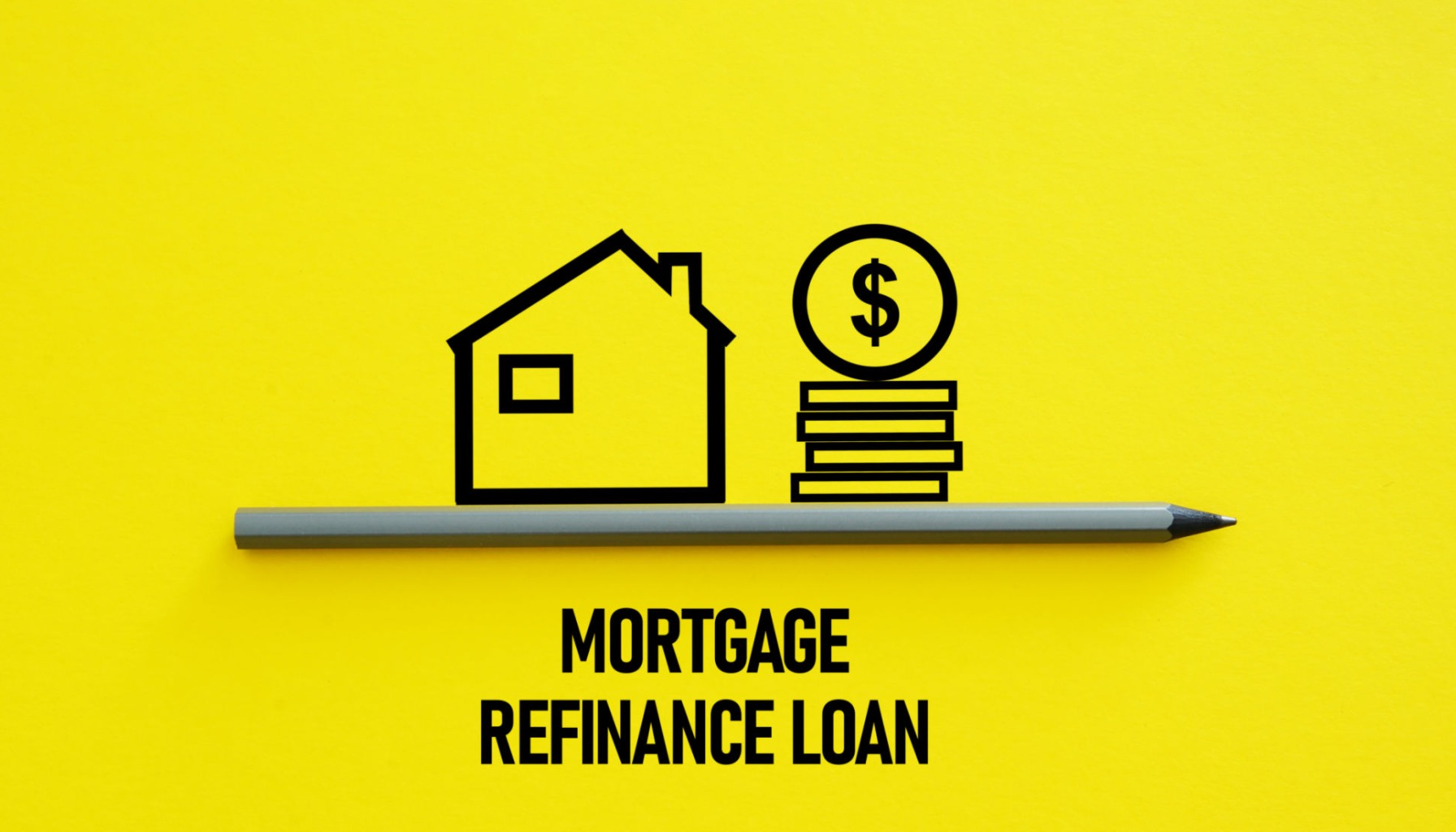Mortgage rates today show a significant jump, with the 30-year refinance rate surging by 25 basis points. This means if you were planning to refinance your home to lock in a better deal, now might be a crucial time to act.
As reported by Zillow, the national average for a 30-year fixed refinance rate has climbed to 7.07%. This is a noticeable increase from the previous week's average of 6.82%. It’s a move that directly impacts homeowners looking to leverage their current equity or simply reduce their monthly outflow. This isn’t just a small blip; it’s a re-evaluation of where borrowing costs are heading in the immediate future.
Mortgage Rates Today: 30-Year Refinance Rate Rises by 25 Basis Points
Understanding the 25 Basis Point Shift
Before we dive deeper, let's clarify what that “25 basis point” figure really means. A basis point is simply one-hundredth of a percent. So, a 25 basis point increase translates to a 0.25% jump in the interest rate. While this might sound minor, when you're talking about mortgages, which are typically borrowed over decades and involve large sums of money, even a quarter of a percent can make a substantial difference in your monthly payment and the total interest you pay over the life of the loan.
For example, if you were looking to refinance a $300,000 mortgage, a rate increase from 6.82% to 7.07% could mean your monthly principal and interest payment jumps by roughly $60. Over 30 years, that adds up to over $21,000 more in interest paid. It makes you really think about the timing of your refinance decisions.
Why the Sudden Surge? The Fed's Influence
So, what’s causing this upward tick in mortgage rates? To understand this, we need to look at the bigger picture, particularly what the Federal Reserve is doing. The Fed recently made its second consecutive cut to its benchmark interest rate, bringing the target range down to 3.75% to 4.00%. This is a clear signal that they're concerned about the economy slowing down, especially in the job market.
However, the Fed's Chair, Jerome Powell, also dropped hints that the expected rate cuts might not be as certain as some hoped. He mentioned that another cut in December is “not a foregone conclusion.” This caution stemmed from mixed economic signals and some data disruptions. This kind of talk from the Fed can make financial markets a bit jumpy, and that directly influences mortgage rates.
Think of it this way: when the Fed signals it might slow down its rate cuts, or that the economy isn't out of the woods yet, investors who buy mortgage-backed securities get a bit more hesitant. To compensate for that perceived risk, they demand a higher return, which translates into higher mortgage rates for us. It’s a complex dance between economic indicators, Fed policy, and market expectations.
Key Data Points to Consider
Let's break down some of the key figures and what they signify:
- National 30-Year Fixed Refinance Rate: Currently 7.07% (up 13 basis points from Friday, up 25 basis points from the previous week).
- Previous Week's Average (30-Year Fixed): 6.82%.
- National 15-Year Fixed Refinance Rate: Increased to 6.02% (up 21 basis points).
- 5-Year ARM Refinance Rate: Currently 7.42%.
The increase in the 15-year fixed rate also signals a broader trend of rising borrowing costs across different mortgage products. While ARMs (Adjustable-Rate Mortgages) sometimes offer a lower initial rate, their longer-term cost can be unpredictable, especially in a rising rate environment.
What a 25 Basis Point Increase Means for Monthly Payments
As I touched on earlier, that 0.25% difference isn't just a number on a screen; it shows up directly in your wallet.
| Loan Amount | Original Payment (6.82%) | New Payment (7.07%) | Monthly Difference |
|---|---|---|---|
| $200,000 | $1,302 | $1,336 | $34 |
| $300,000 | $1,953 | $2,004 | $51 |
| $400,000 | $2,604 | $2,671 | $67 |
Note: Figures are approximate and for illustrative purposes. Actual payments will vary based on lender fees and other specifics.
It's clear that even modest increases can add up. This is why staying informed about mortgage rates is so important for any homeowner.
Refinance Timing: Locking in Rates Before Further Hikes
The recent uptick is a good reminder that the window for securing historically low refinance rates might be closing. The Fed is in a bit of a balancing act. They want to stimulate the economy without triggering runaway inflation. This means we could see more volatility, with rates potentially wavering.
My take on this is that if you've been on the fence about refinancing, and your current rate is significantly higher than the current offerings, it might be wise to seriously consider moving forward. Waiting for rates to potentially drop further introduces the risk of them climbing even higher. It's a calculated gamble, and right now, the odds seem to be shifting towards caution.
Comparing 30-Year Fixed vs. 15-Year Refinance Options
This recent surge also brings renewed attention to the trade-offs between different refinance terms.
30-Year Fixed Refinance:
- Pros: Lower monthly payments, more flexibility in budgeting.
- Cons: You'll pay more interest over the life of the loan.
15-Year Fixed Refinance:
- Pros: Lower interest rate overall, pay off your mortgage much faster, build equity quicker.
- Cons: Higher monthly payments, which might be a stretch for some budgets.
With the 15-year rate also climbing, the gap between the two might become less attractive for some homeowners. However, if you can comfortably afford the higher monthly payments of a 15-year loan, it can still be a financially sound decision in the long run, even with the slight increase.
Recommended Read:
30-Year Fixed Refinance Rate Trends – October 30, 2025
How Credit Score Impacts Your Refinance Rate Today
It's vital to remember that these national averages are just that – averages. The actual rate you'll qualify for is highly personal and heavily influenced by your creditworthiness.
- Excellent Credit (740+): You'll generally get the best rates available, often even better than the advertised national average.
- Good Credit (670-739): You'll still secure competitive rates, but perhaps not the absolute lowest.
- Fair Credit (580-669): Expect higher rates, and it might be harder to qualify for certain refinance options.
- Poor Credit (Below 580): Refinancing may be challenging, and if approved, rates will likely be quite high.
My advice? Always check your credit report before starting the refinance process. Address any errors and work on improving your score if it's not where you want it. Even a few extra points can shave a significant amount off your mortgage interest.
The Role of Debt-to-Income Ratio in Refinancing
Beyond your credit score, lenders will meticulously examine your debt-to-income (DTI) ratio. This ratio compares your total monthly debt payments to your gross monthly income. Lenders use this to gauge your ability to repay a new loan.
- Ideal: Lenders often prefer a DTI below 36%.
- Acceptable: Some may go up to 43% or even 50% in certain FHA or VA loan scenarios, but this often comes with higher rates and stricter terms.
If your DTI is on the higher side, it might be worth looking at ways to reduce your existing debts (credit cards, car loans) before applying to refinance your mortgage. This would not only improve your mortgage eligibility but also your overall financial health.
What’s Next for Mortgage Rates?
The economic environment is certainly dynamic. While the Federal Reserve has signaled a shift towards supporting economic growth, the path forward for interest rates is anything but smooth. The end of the government shutdown means we'll start seeing more economic data, which will be crucial for the Fed's future decisions. Keep an eye on inflation reports and labor market trends; they will be the biggest drivers of where mortgage rates are headed.
For now, the slight surge in mortgage rates serves as a timely reminder: if you're considering a refinance, it's worth exploring your options now. The markets are reacting to mixed signals, and while improvement is the goal, the journey there might be a bumpy one.
“Invest Smart — Build Long-Term Wealth Through Real Estate”
Norada's team can guide you through current market dynamics and help you position your investments wisely—whether you're looking to reduce rates, pull out equity, or expand your portfolio.
Work with us to identify proven, cash-flowing markets and diversify your portfolio while borrowing costs remain favorable.
HOT NEW TURNKEY DEALS JUST LISTED!
Speak with a seasoned Norada investment counselor today (No Obligation):
(800) 611-3060
Recommended Read:
- When You Refinance a Mortgage Do the 30 Years Start Over?
- Should You Refinance as Mortgage Rates Reach Lowest Level in Over a Year?
- NAR Predicts 6% Mortgage Rates in 2025 Will Boost Housing Market
- Mortgage Rates Predictions for 2025: Expert Forecast
- Half of Recent Home Buyers Got Mortgage Rates Below 5%
- Mortgage Rates Need to Drop by 2% Before Buying Spree Begins
- Will Mortgage Rates Ever Be 3% Again: Future Outlook
- Mortgage Rates Predictions for Next 2 Years
- Mortgage Rate Predictions for Next 5 Years
- Mortgage Rate Predictions for 2025: Expert Forecast



